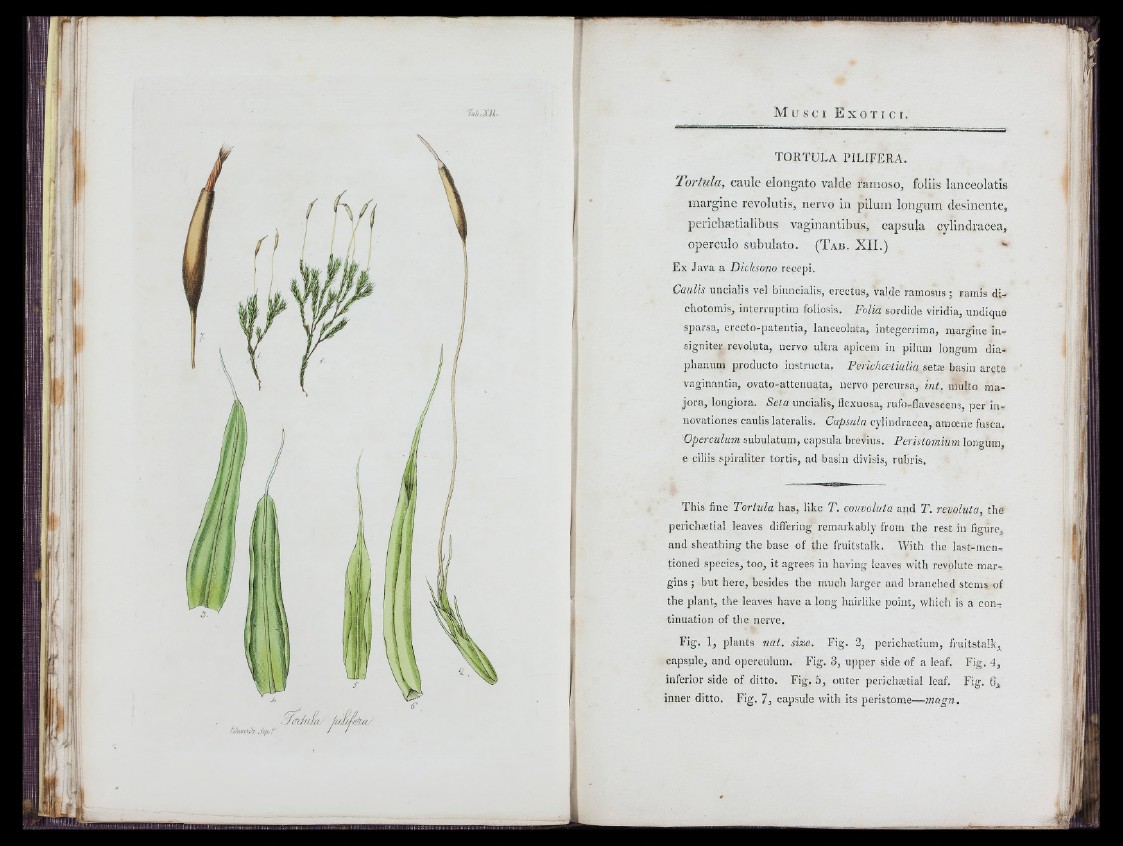
TORTULA PILIFERA.
lortula, caule elongato valde ramoso, foliis lanceolatis
margine revolutis, nervo in pilum longurn desinente,
perichsetialibus vaginantibus, capsula cylindracea,
operculo subulato. (Tab. XII.) "
Ex Java a Dicksono recepì.
Caulis uncialis vel biuncialis, erectus, valde ramosus ; ramis di-
chotomis, interruptim foliosis. Folia sordide viridia, undique
sparsa, erecto-patentia, lanceolata, integerrima, margine in-
signiter revoluta, nervo ultra apicem in pilum longura dia-
phanum producto instructa. Perichcetialia set» basin arete
vaginantia, ovato-attenuata, nervo percursa, int. multo ma-
jora, longiora. Seta uncialis, flexuosa, rufo-ilavesceiis, per in-
iiovationes caulis lateralis. Capsula cylindracea, amoene fusca.
Operculum subulatum, capsula brevius. Perisiomhnn longum,
e ciliis .spiraliter torti.s, ad basin divisis, rubris.
This fine Tortula has, like T. coiivolula and T. revoluta, the
perich»tial leaves differing remarkably from the rest in figure,
and sheathing the base of the fruitstalk. With the last-mentioned
.species, too, it agrees in having leaves with revplute margins
; but here, besides the much larger and branched stems of
the plant, the leaves have a long hairlike point, which is a continuation
of the nerve.
Fig. 1, plants nat. size. Fig. 2, perich»tium, fruitstalk,
capsule, and operculum. Fig. 3, upper side of a leaf. Fig. 4,
inferior side of ditto. Fig. 5, outer perich»tial leaf. Fig. 6,
inner ditto. Fig. 7, capsule with its peristome—magn.
■ fr fiju ltc LjjÁkcry.